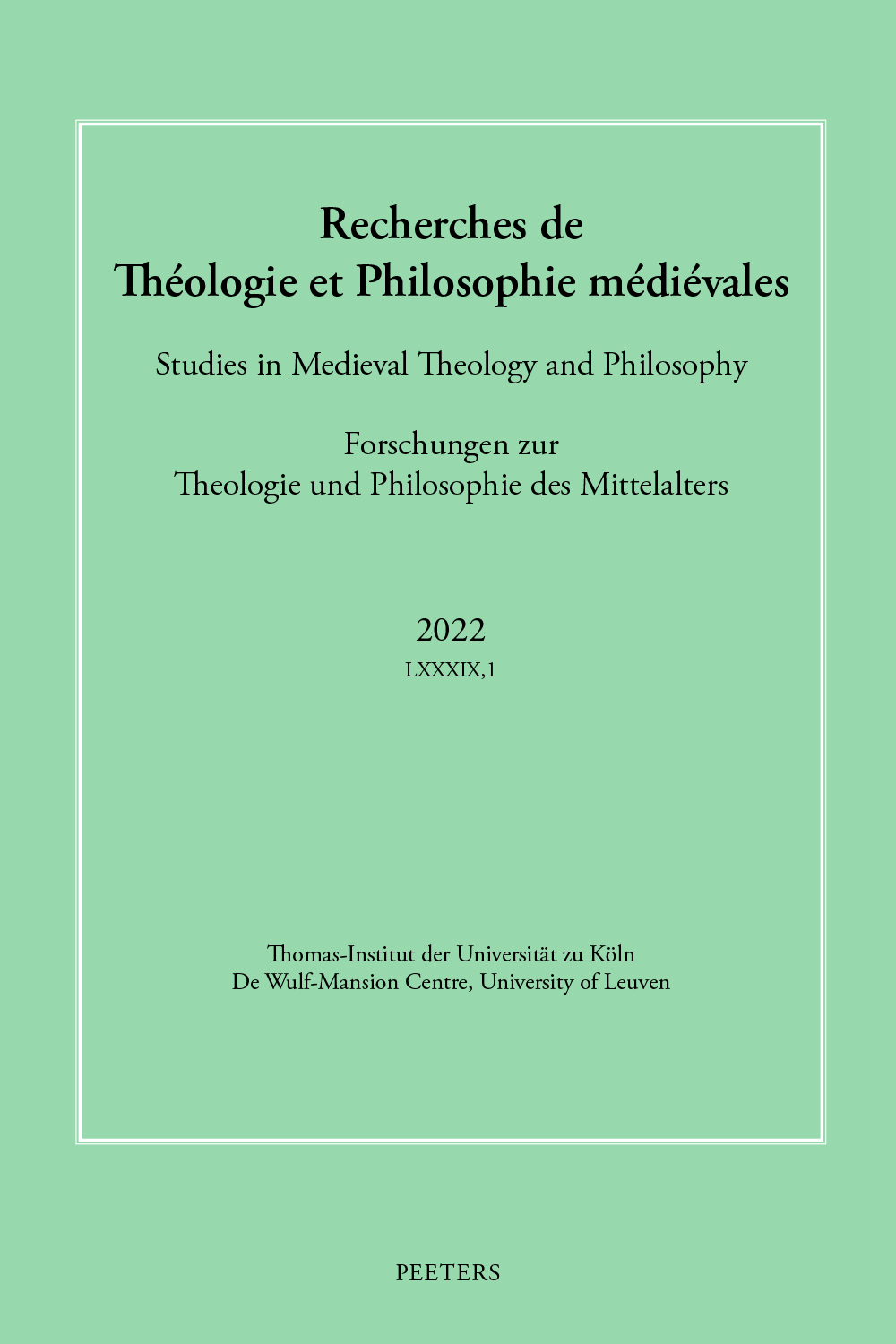 previous article in this issue previous article in this issue | next article in this issue  |

Preview first page |
Document Details : Title: The Realm of entia rationis and its Boundaries Subtitle: Hervaeus Natalis on Objective Being Author(s): GIRARD, Charles Journal: Recherches de Théologie et Philosophie Médiévales Volume: 87 Issue: 2 Date: 2020 Pages: 349-369 DOI: 10.2143/RTPM.87.2.3289008 Abstract : Hervaeus Natalis distinguishes two types of items that can have esse obiective in the intellect: objects of acts of intellection (man, this cat, etc.) and properties unapprehended by these acts, or background properties (being a species, being a particular, etc.), that are beings of reason. Yet, his conception of the esse obiective of objects evolved. First, he had a neutral conception of esse obiective: items presenting themselves to the intellect are cognized, transparently, without being altered in the process. Later, he developed an ontologically committing conception of the objective being of objects: items presenting themselves to the intellect take on rational being (esse rationis) as such. This evolution transpires because Hervaeus introduces intentional relations as what makes the cognized item be objectively in the intellect and includes them within the class of background properties (being of reason). Both these conceptions manage to account for our access to extra-mental things. |
|


